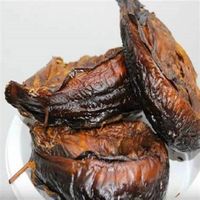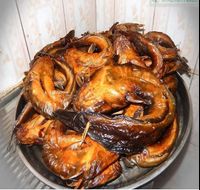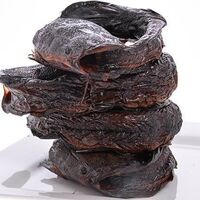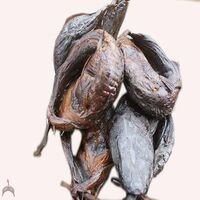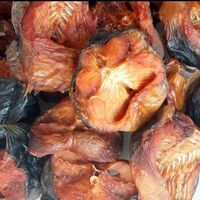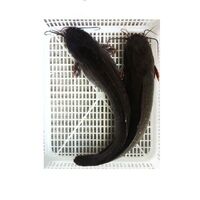MOSCOW SMOKED BEST QUALITY READY FOR EXPORT
- $260.00 / >=25 metric tons
- 25 metric tons
- AVAPLUS TRADING INTERNATIONAL COMPANY LIMITED
- Chon Buri, Thailand
- Mr Ava Y
| Supply capacity: | 500 40ft containers per month | model: | 953 |
| Bale: | piece | port: | Laem Chabang |
| Drying process: | advertise | brand: | smoked catfish |
| place of origin; place of origin: | Bangkok, Thailand | shape: | blockage |
| Certification: | International Organization for Standardization | Packaging Preview: | |
| Weight (kg): | 20 | part: | fillet, fin, bone, head, roe, whole, body, surimi |
| payment terms: | wire transfer | style: | dry |
| Product Category: | fish | Packaging Details: | Size: Medium and Large Weight: 12kg. / Box Quantity: 85-95 1 20'FCL = 372 Box 1 40'FCL = 744 Box add 0.5 USD / Box for Silicone 150 g. |
| Shelf life: | 24 months |
Traditional dried catfish (Anarhichas lupus), known in Icelandic as hertur steinbítur or steinbítsrikklingur, is a catfish-like product that is dried outdoors at low temperatures. Ocean catfish used for drying are mainly caught by longlines. It is usually cut into slices before drying. To speed up the process, the meat is divided into 3-4 cm wide strips, taking care not to cut the skin. Dip the fillets in light salt water and hang them on wooden pegs to air dry. Climatic conditions are very important for drying. Freezing temperature and air volume at the beginning of the drying period provide the best results. Outdoor drying takes 6-7 weeks. Catfish are not suitable for indoor cupboard drying. The product is not soaked or cooked like other types of dried fish before eating, but is beaten with a mallet to soften it and eaten raw. Dried catfish are traditionally eaten as a snack or used to cook a savory meal
It is popular among all segments of the Icelandic population. It can be eaten year-round, but consumption peaks during the summer and during the Icelandic Traditional Food Festival from late January to late February. Like traditional dried haddock, dried catfish can be considered a healthy product because it is almost pure protein with a very good sodium-potassium ratio. Dried fish has been a historical staple of Icelandic society and is used in most meals similarly to bread. It is first mentioned in Icelandic records from 1200, and for centuries cod has been Iceland's most valuable export. Besides haddock, marine catfish is the most common dried fish in Iceland. However, the traditionally dry marine catfish is only produced by a few small companies in the Westfjords in northwestern Iceland, where the climatic conditions are best.
Production techniques may vary from one producer to another, but have been used for centuries. Although catfish is not suitable for indoor drying, it still faces competition in the market from lower-cost, less-tasting dried fish products. Compared to the popular haddock, catfish contains more fat and is more sensitive to oxidation. It's difficult to store and preserve, so most stores and supermarkets don't offer traditional dried catfish, but less expensive dried fish.
Please contact us for a quote and more information.
Quality: healthy and hygienic dried fish
Product Type: Smoked Catfish
Variety: Dried/Smoked Fish
style: dry
part: whole
Shelf life: 24 months
Size: According to buyer's needs
Features: delicious
Specifications: 10kg/ctn, 50g/pc
Loading capacity: 20 and 40 foot containers
Packaging cartons
Usage: Cooking/Food
Appearance: good
No harmful preservatives etc.


